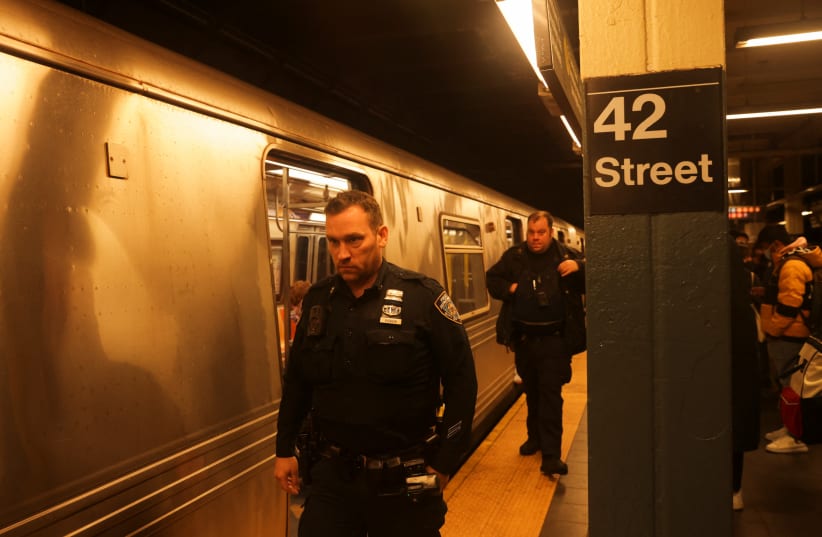I would like to take this opportunity to publicly address a misconception about my recently released book. Some have asked why I would use an in-depth analysis of the Shalosh Regalim – the three pilgrimage festivals of Passover, Shavuot and Sukkot – as an opportunity to promote the use of mass transit.
I assure you, however, that the questioners are simply confusing gratitude with advocacy. Please permit me to explain:
Uncovering the underlying messages and lessons of the Shalosh Regalim is an endeavor whose time has come. A lot of effort has gone into explaining and articulating the meaning and significance of Shabbat, for example. One can find an abundance of books and articles on the subject.
We all may certainly have considerable work to do to improve and enhance our observance of Shabbat, but there is no lack of resources to help us do that. By contrast, the Shalosh Regalim have been somewhat undeserved in this regard.
Further, when the Shalosh Regalim are discussed, the conversation is generally restricted to an individual festival rather than the overall unit. Despite the Torah’s grouping the three festivals – Passover, Shavuot and Sukkot as a unit through assigning them the special designation “The three pilgrimage festivals” – people generally don’t view them as such.
This is understandable. On the surface the festivals seem disparate and disjointed. Each observance appears to be so unique that it can be hard to place it within a system. Many, if not most, see these three festivals as a cholent (Shabbat stew) of sorts, an eclectic group of unrelated observances where a mix of elements – be they ritual, historical or agricultural – are sprinkled in to varying extents for reasons not readily apparent.
The unique elements, particularly food-related ones – the ones we tend to focus on – draw our attention away from any element of cohesion. We view the festivals as being so unique that we generally don’t even try to connect the dots to reveal a broader picture.
Sefirat Ha’omer – the Counting of the Omer – serves to bind Passover and Shavuot together, yet once we arrive at Shavuot we seem happy to leave the memories of matzah meal or potato starch behind (and perhaps actively suppress them) and focus our attention exclusively on the dairy delicacies that lie ahead, scarcely thinking to restart the involved conversation about the meaning of the holiday and its obligations (or lack thereof) from where we left off on Passover. Months later, when Sukkot comes around, more people speak of its connection to the Ten Days of Repentance than the other two festivals.
The lack of attention paid to the overall unit of the Shalosh Regalim is understandable. Even after the destruction of the temple, the institution of Shabbat, for the average person, has remained basically intact. However, the lack of the pilgrimage component, the absence of the temple service and the shift away from an agricultural society have left the three pilgrimage festivals drastically altered from their original, ideal form.
THE MODIFIED form of Judaism we have been left with after the destruction of the Temple has engendered a distorted view of the Shalosh Regalim on account of the elements of the program that are no longer within our frame of reference. The current state of affairs can lead one to ask some intriguing questions: if we were to transcend this handicap and view the festivals as a unit, how would it impact our understanding of the Torah’s intentions? What insights might we gain?
Studying and analyzing the components whose absence hampers our efforts to achieve a greater depth of understanding of these festivals goes a long way to help achieve a more informed understanding of them. While, conceptually speaking, this task sounds reasonable enough, in practice it presents a challenge.
Where in our harried contemporary society can one find the headspace for this type of contemplation?
Perhaps the most obvious choice is the aforementioned weekly opportunity conducive to engaging in thoughtful analysis that we are blessed with – Shabbat. Many people I know have expressed how their most profound ideas come to them on Shabbat.
As such, my initial intention was to spend every Shabbat contemplating the Shalosh Regalim. I figured I could leverage one institution and the respite from the daily grind that it provides to help me better appreciate the other.
The challenge that engaging is this type of analysis on Shabbat presents is the difficulty of retaining those ideas long enough after Shabbat to record them. Even the most exciting realizations have a way of fading from memory after a bowl of cholent and a good nap. I am fortunate, however, to have in my life an approximation of Shabbat, which does not share Shabbat’s restrictions against writing, for instance – the New York City Subway. I have the opportunity to ride the subway every weekday to and from work.
There are numerous ways in which the subway closely resembles Shabbat.
The lack of Internet access in the subway tunnels provides you some time to think without interruptions from the outside world. You are along for the ride until you reach the destination – whether that may be Brooklyn or havdalah, the candle ritual demarcation of the passage from holiness to weekdays. (Sometimes, you will encounter extensive delays which is the equivalent of having kept Shabbat until [the 12th-century French commentator] Rabbeinu Tam’s zman, following a stricture that Shabbat ends later.)
If you sit down for long enough, you are likely to doze off for a while.
When you factor in the zemirot, drashot (songs and rabbinically-learned explanations) on religious themes and tzedakah appeals that you often encounter while riding – coupled with the similar difficulty in finding an empty seat – it is practically like being in shul.
It was in that setting that I discovered and recorded an understanding of these festivals as food for further consideration. That’s why when people ask me why I don’t move closer to my work, I respond that doing so would amount to bitul Torah (wasting precious time that could be better used for Torah study).
I invite you to take up the challenge of finding a time and place you can engage in contemplative thinking and using that opportunity to uncover the often overlooked dynamic of the three festivals as a unit. Doing so is certain to help you achieve more impactful holiday observances.
May our attempts to better appreciate the elements of the festivals that are currently missing help inspire us to work to regain what we have lost.
Chagim Sameachim! (Happy Holidays)
The writer is the author of The Tripod: A New Perspective on the Shalosh Regalim, recently published by Mosaica Press, which he wrote during his commute to and from work.

